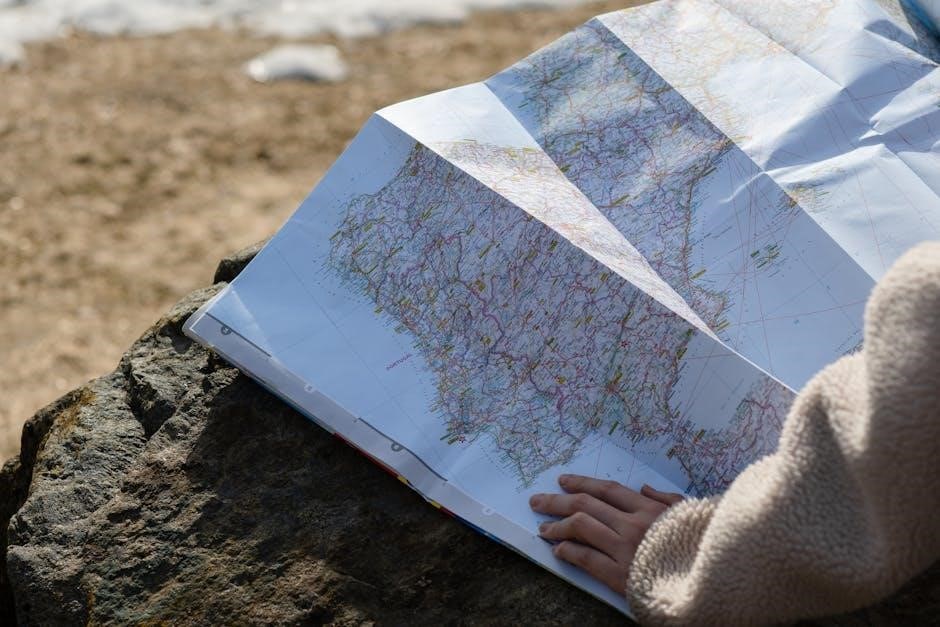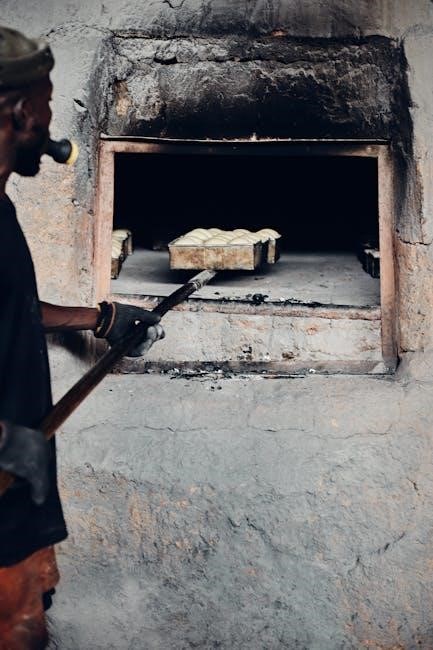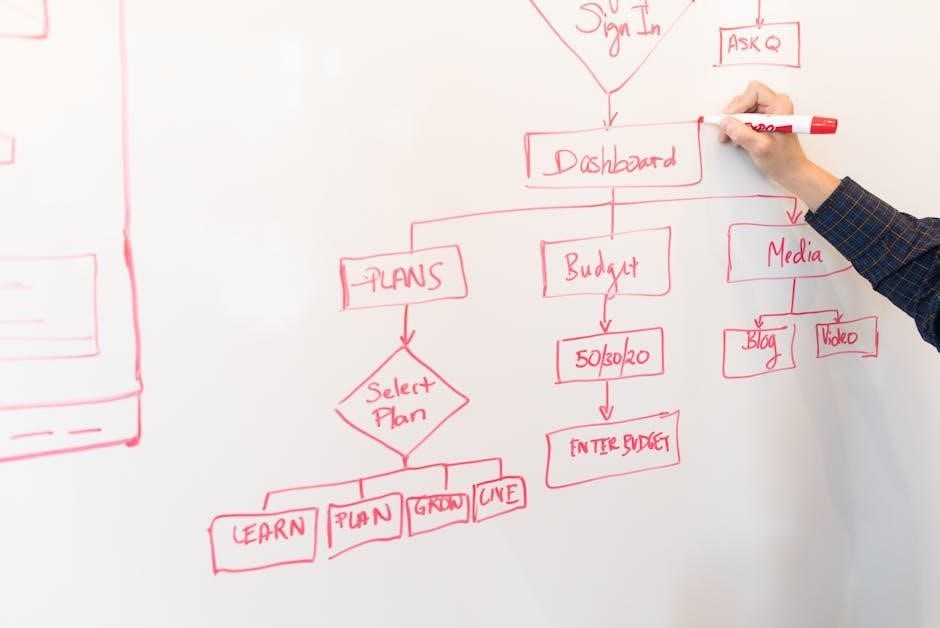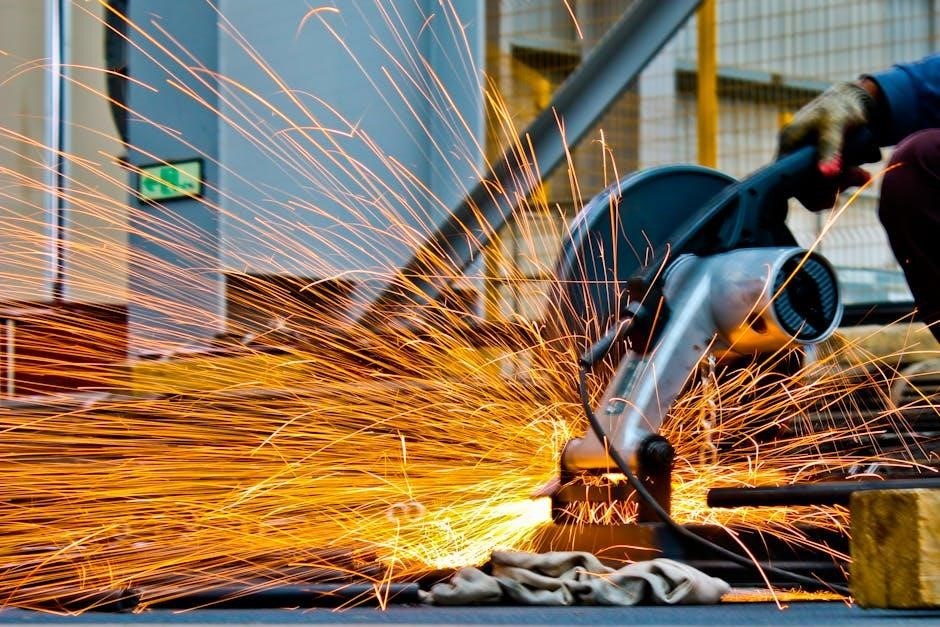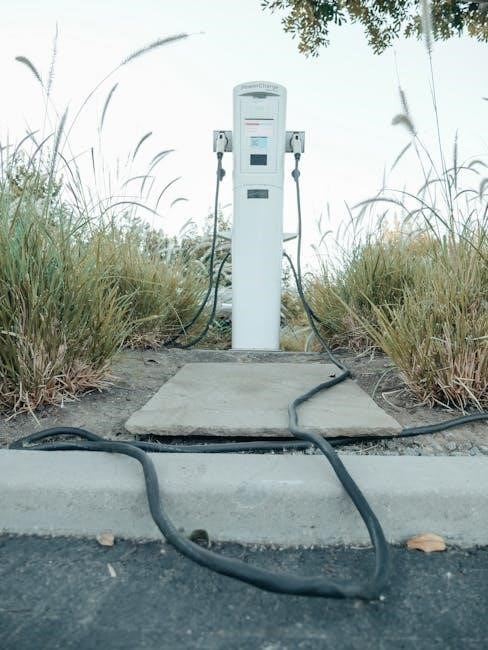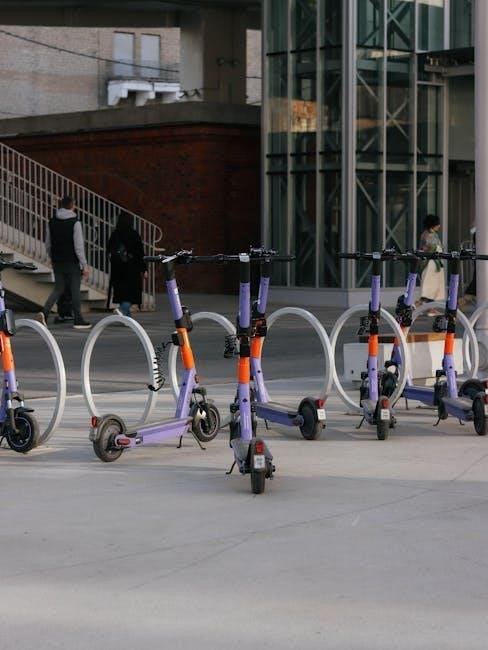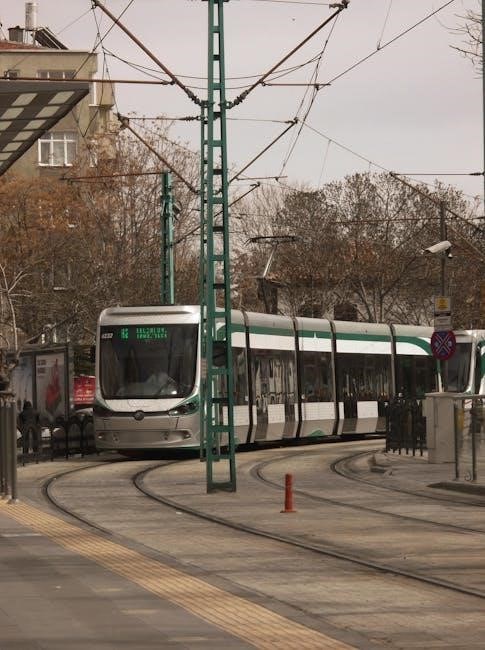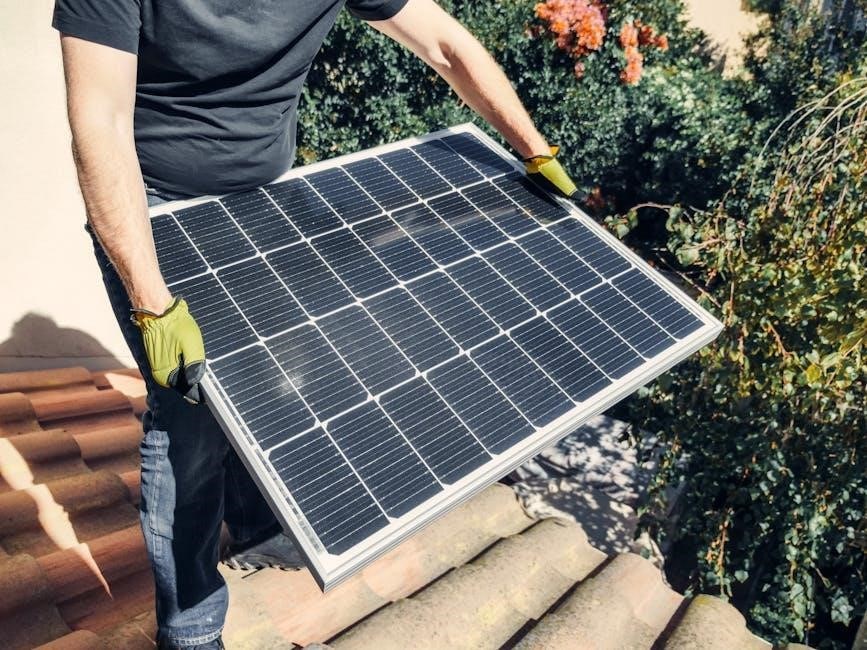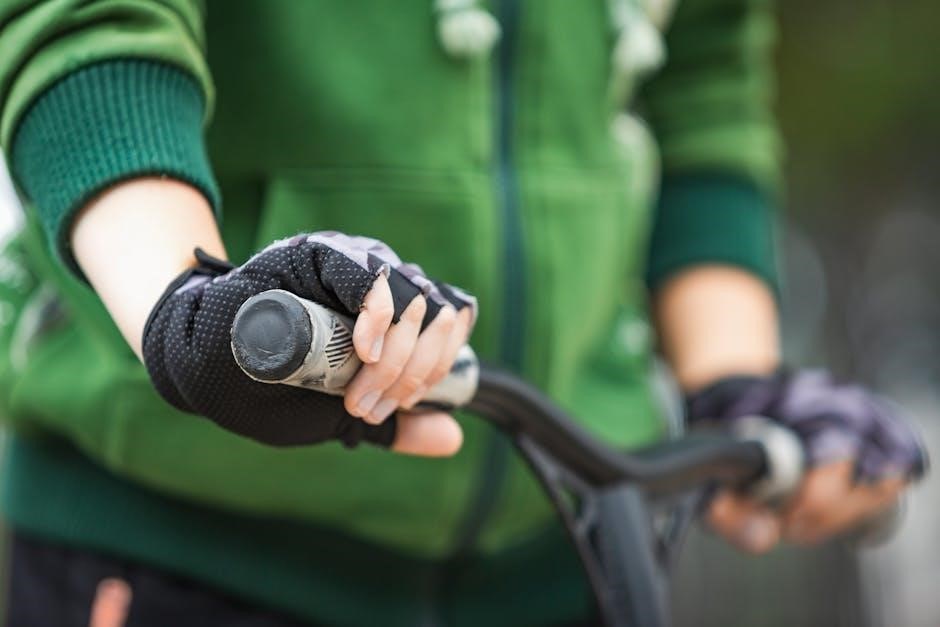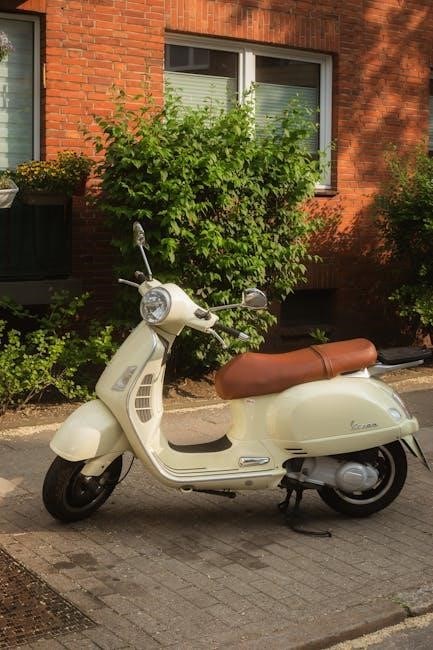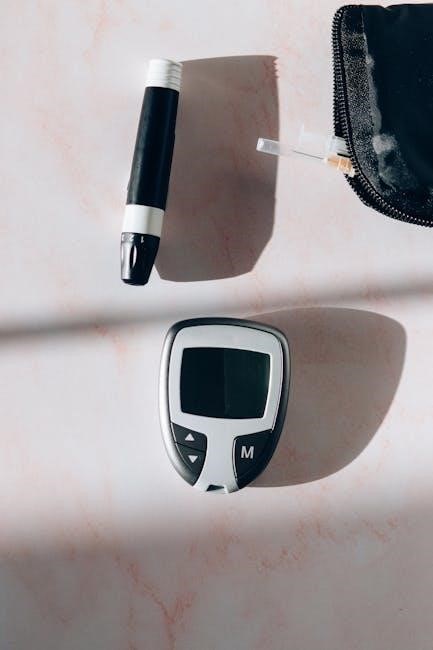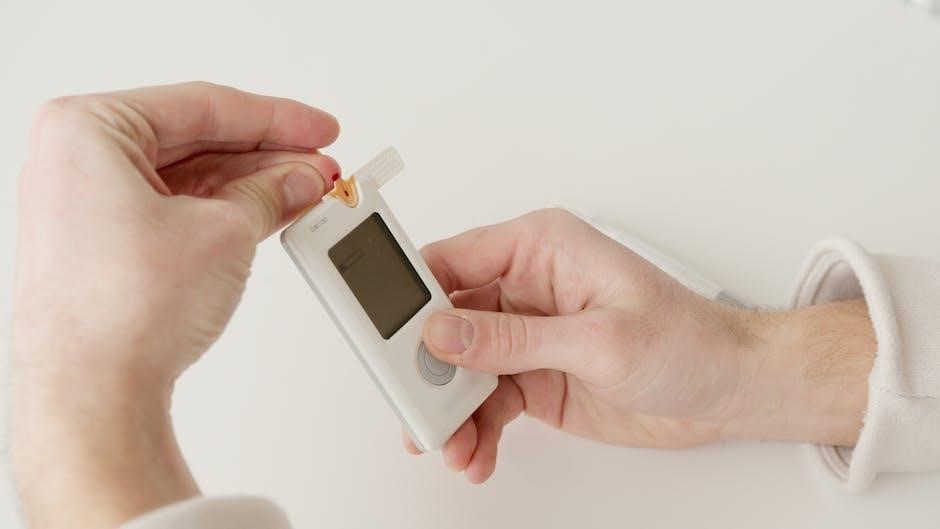Costco egg rolls are delicious, pre-made treats offering various fillings, easy to cook via baking, frying, or air frying, perfect for snacks or meals with dipping sauces.
What They Are
Costco egg rolls are a popular, pre-made snack or appetizer inspired by Asian cuisine. They typically consist of a crispy, golden wrapper filled with a savory mixture of vegetables, such as cabbage and carrots, and sometimes meat or shrimp. These rolls are designed for convenience, as they are pre-assembled and ready to cook. Sold in bulk at Costco, they are a favorite for quick meals, parties, or snacks. The combination of crunchy texture and flavorful filling makes them a delightful treat that appeals to a wide range of tastes. They are also versatile, suitable for various cooking methods like frying, baking, or air frying.
Popularity and Convenience

Costco egg rolls have gained immense popularity due to their ease of preparation and delicious taste. They are a convenient option for quick meals or snacks, appealing to both home cooks and busy individuals. Their pre-made format allows for minimal effort, as they only require cooking before serving. Versatile cooking methods—such as baking, frying, or air frying—add to their appeal. Many customers appreciate the value for money, as they are sold in large quantities, making them ideal for families, parties, or meal prep. Their widespread availability at Costco stores further contributes to their popularity, ensuring they remain a favorite choice for many.
Brief History
Costco egg rolls have become a beloved offering, tracing their roots to the retailer’s commitment to providing convenient, high-quality products. Introduced in the late 1990s, they quickly gained traction as a frozen staple, inspired by traditional Asian cuisine. Initially marketed as a time-saving alternative to homemade versions, they embraced the growing demand for ready-to-cook meals. Their popularity soared due to their versatility, delicious taste, and ease of preparation. Over the years, Costco has refined the recipe, ensuring premium ingredients and consistent quality. This evolution has solidified their place as a customer favorite, adapting to changing tastes while maintaining their signature appeal.
Cooking Methods
Costco egg rolls can be cooked in various ways, including oven baking, deep frying, air frying, or microwaving. Each method offers a different texture and convenience level.
- Oven baking provides a crispy exterior with minimal oil.
- Deep frying yields a golden, crunchy texture.
- Air frying is a healthier alternative with less oil.
- Microwaving is the quickest option for a soft finish.
Oven Cooking
Oven cooking is a popular method for preparing Costco egg rolls, offering a crispy texture with less oil. Preheat the oven to 400°F (200°C). Place the egg rolls on a baking sheet lined with parchment paper, leaving space between them for even cooking. Brush lightly with oil for crispiness. Bake for 12-15 minutes, flipping halfway, until golden brown. This method ensures even heating and a delicious result without deep frying. Ideal for a healthier alternative, oven cooking retains flavor while minimizing grease. Perfect for large batches, it’s a convenient and mess-free option for achieving perfectly cooked egg rolls every time.
Deep Frying
Deep frying is a classic method for achieving crispy Costco egg rolls. Heat vegetable or peanut oil in a deep pot to 350°F. Carefully place egg rolls in batches, avoiding overcrowding. Fry for 3-5 minutes on each side, or until golden brown. Use a slotted spoon to remove and drain on paper towels. This method yields a crunchy exterior and tender interior. Ensure oil reaches the correct temperature to prevent greasiness. Adjust heat as needed to avoid burning. Deep frying is ideal for those seeking an authentic, savory texture. It’s a quick and flavorful way to enjoy Costco egg rolls at their best. Always use caution when handling hot oil.

Air Fryer Cooking
Air fryer cooking offers a healthier alternative to deep frying while maintaining crispiness. Preheat the air fryer to 400°F (200°C). Place Costco egg rolls in a single layer, leaving space between them for even cooking. Cook for 10-12 minutes, shaking the basket halfway through. This method uses minimal oil, reducing calories without sacrificing flavor. The air fryer’s circulating heat ensures a golden exterior and tender interior. For extra crispiness, lightly spray with cooking oil before cooking. Adjust timing based on your air fryer model and desired crispiness. It’s a convenient and guilt-free way to enjoy Costco egg rolls at home.
Microwave Cooking
Microwave cooking is a quick and easy method for preparing Costco egg rolls, though it may not yield the same crispiness as other methods. Place 1-2 egg rolls on a microwave-safe plate lined with a paper towel. Cook on high for 20-30 seconds per side, or until crispy and golden. Check for doneness by carefully flipping them. Be cautious, as overheating can cause burning. For softer results, wrap egg rolls in a damp paper towel before microwaving. While not ideal for large batches, this method is perfect for a fast snack. Serve with your favorite dipping sauce for enhanced flavor.

Cooking Techniques
Cooking techniques for Costco egg rolls vary, ensuring the perfect balance of crispiness and flavor. Methods include oven baking, deep frying, air frying, and microwaving, each offering unique results.
Temperature and Time for Oven
For oven cooking, preheat to 400°F (200°C). Place egg rolls on a baking sheet lined with parchment paper, leaving space between them for even cooking. Bake for 12-15 minutes, flipping halfway through, until golden brown. Ensure the internal temperature reaches 165°F (75°C) for food safety. For extra crispiness, spray lightly with oil before baking. Avoid overcrowding to prevent steaming instead of browning. Monitor closely to prevent burning, especially in the last few minutes. Let cool slightly before serving. This method yields a crispy exterior and tender interior without deep frying. Perfect for a healthier, mess-free alternative. Achieve restaurant-quality results effortlessly at home.

Oil Selection and Temperature Control for Deep Frying
Selecting the right oil is crucial for deep frying Costco egg rolls. Opt for neutral-tasting oils with a high smoke point, such as vegetable or peanut oil. Preheat the oil to 350°F (175°C) for optimal results. Avoid overheating, as it can cause the oil to smoke and burn the egg rolls. Use a thermometer to maintain consistent temperature. Fry in batches, ensuring the pot isn’t overcrowded. Cook for 3-4 minutes per side until golden brown. Adjust heat as needed to prevent oil from dropping below 325°F (165°C). Proper temperature control ensures crispy exteriors and tender interiors. Never leave the stove unattended during frying.
Layering and Space in Air Fryer
Proper layering and spacing are essential for evenly cooking Costco egg rolls in an air fryer. Arrange the egg rolls in a single layer, leaving space between each roll to allow air to circulate. Overcrowding can lead to uneven cooking and a steamed texture instead of crispy. If necessary, cook in batches to ensure adequate spacing. For larger air fryers, you can stack a second layer using a tray or rack, but ensure the rolls are not overlapping. This method promotes even browning and crispiness. Always preheat the air fryer before adding the egg rolls for the best results. Consistent airflow guarantees a perfect texture every time.
Heating Times and Results in Microwave
Heating Costco egg rolls in the microwave is quick and convenient, though results may vary. Cook on high for 20-30 seconds per side for a single egg roll, adjusting time based on quantity. Place the egg roll on a microwave-safe plate, possibly covered with a damp paper towel to retain moisture. Cooking too long can make the wrapper soggy or the filling dry. For crispiness, pat dry excess moisture after microwaving. While not the best method for texture, microwaving is ideal for quick reheating. For better results, consider air frying or oven cooking. Experiment with time to achieve your desired texture.
Ingredients and Nutritional Information
Costco egg rolls typically contain chicken, cabbage, carrots, and seasonings wrapped in a thin dough. They are a savory, convenient snack or meal addition.
Nutritionally, they provide a mix of protein, carbs, and fats, with about 200 calories per serving. They are not overly healthy but can fit into a balanced diet.
Main Ingredients
Costco egg rolls primarily consist of shredded chicken, finely chopped cabbage, carrots, and onions, seasoned with garlic, ginger, and soy sauce. The filling is wrapped in a thin dough wrapper made from wheat flour and water. Some variations may include additional ingredients like green onions or sesame oil for enhanced flavor. The combination of savory meats, crisp vegetables, and aromatic spices creates a balanced and flavorful profile. These ingredients are carefully selected to ensure a harmonious blend of textures and tastes, making the egg rolls a satisfying and delicious snack or meal accompaniment. The simplicity of the ingredients contributes to their broad appeal and versatility in various dishes.
Nutritional Breakdown
Costco egg rolls are a nutrient-dense snack, providing a mix of carbohydrates, proteins, and fats. Each serving typically contains around 200-250 calories, with 10-12g of fat, 20-25g of carbs, and 8-10g of protein. They are also a good source of dietary fiber, contributing to digestive health. Sodium content is moderate, ranging from 350-450mg per roll, making them suitable for those monitoring salt intake. While they contain no added sugars, the dough wrapper adds natural sugars. The rolls are free from cholesterol but may include allergens like wheat, soy, or sesame oil. Moderation is key due to their calorie and sodium content, but they can fit into a balanced diet when consumed mindfully.
Allergens and Dietary Notes
Costco egg rolls contain common allergens such as wheat, soy, and sesame oil, making them unsuitable for individuals with these allergies. They may also be processed in facilities handling milk, peanuts, or tree nuts, risking cross-contamination. Vegetarians can enjoy most varieties, as they are typically meat-free, but they are not vegan due to ingredients like eggs. For those with gluten intolerance, some brands offer gluten-free options, but standard versions contain gluten. Always check packaging for specific allergen warnings. If unsure, consult the manufacturer or opt for certified allergen-friendly alternatives to ensure safety and dietary compliance.

Dipping Sauces and Toppings
Costco egg rolls pair perfectly with soy sauce, sweet chili sauce, or plum sauce for dipping. Add toppings like green onions or sesame seeds for extra flavor and texture.
Traditional Dipping Sauces
Traditional dipping sauces for Costco egg rolls include soy sauce, sweet chili sauce, and plum sauce. Soy sauce provides a salty, umami flavor, while sweet chili sauce adds a sweet and spicy kick. Plum sauce offers a sweet and tangy taste, balancing the savory flavors of the egg rolls. These sauces are commonly served alongside egg rolls in Asian cuisine and enhance the overall flavor experience. They complement the crispy exterior and soft, savory filling of the rolls perfectly, making them a must-try for an authentic taste. Experimenting with these traditional sauces can elevate your snack or meal to the next level.
Creative Sauce Combinations
Creative sauce combinations can elevate the flavor of Costco egg rolls. A spicy mango salsa adds a tropical twist, blending sweet and heat. For a tangy kick, mix sriracha with Greek yogurt for a creamy, spicy dip. Honey and ginger create a sweet-and-savory glaze, perfect for a lighter option. Another idea is a peanut butter and soy sauce mix, offering a nutty, umami flavor. Experimenting with these unique combinations allows you to personalize the taste of your egg rolls. These sauces add variety to the traditional options, making each bite a delicious adventure. Try these creative pairings to enhance your snacking experience with Costco egg rolls.
Toppings for Added Flavor
Toppings can transform Costco egg rolls into a flavorful delight. Sprinkle green onions or sesame seeds for a fresh, crunchy texture. Add diced cilantro or mint for a burst of herbal freshness. A drizzle of toasted chili oil or crushed red pepper flakes introduces spicy undertones. For a tangy twist, top with pickled ginger slices or a sprinkle of furikake. Crispy garlic bits or toasted peanuts enhance the texture and aroma. These toppings add depth and variety to the classic egg roll, making each bite more exciting. Experiment with combinations to find your perfect flavor profile and elevate your snacking experience.

Creative Serving Ideas
Creative serving ideas for Costco egg rolls include using them as appetizers, adding to meals for crunch, or incorporating into wraps and stir-fries. Try pairing with fusion recipes like egg roll sushi or tacos for a unique twist. Serve as snacks with creative toppings or combine with fresh greens for a hearty salad. These versatile rolls can elevate any dish with their crispy texture and savory flavor, making them a adaptable addition to various culinary creations.
As Appetizers
Serving Costco egg rolls as appetizers is a great way to start any gathering. Their crispy exterior and flavorful filling make them a crowd-pleaser. Pair them with a variety of dipping sauces like soy sauce, sweet chili, or plum sauce for added flavor. For a more elegant presentation, garnish with fresh herbs or serve on a platter with pickled vegetables. They can also be paired with other appetizers, such as dumplings or edamame, for a well-rounded starter platter. Egg rolls are easy to serve and perfect for parties, events, or casual get-togethers, offering a delicious and convenient start to any meal.
In Meals
Costco egg rolls can seamlessly integrate into a variety of meals, adding a satisfying crunch and flavor. Serve them as a side dish alongside stir-fries, noodle dishes, or Asian-inspired salads for a balanced meal. They also complement soups, such as wonton or hot and sour soup, by adding texture and warmth. For a quick dinner, pair egg rolls with grilled meats or vegetables and a simple dipping sauce. Their versatility allows them to enhance any meal without overpowering it, making them a great addition to both casual and formal dining settings. This ensures a well-rounded and flavorful dining experience for everyone.

As Snacks
Costco egg rolls make an ideal snack due to their portability and delicious flavor. Perfect for quick bites, they can be enjoyed on their own or paired with a variety of dipping sauces for added taste. Their compact size makes them easy to grab and go, whether for a midday snack or as a light bite while watching a movie. They’re also a hit at parties, offering guests a crispy, savory treat that’s easy to eat. With their versatility and convenience, Costco egg rolls are a great option for satisfying cravings any time of the day.
Fusion Recipes
Costco egg rolls can be creatively incorporated into fusion dishes, blending Asian flavors with global cuisines. Try wrapping them in a Korean BBQ taco shell with bulgogi beef and kimchi slaw. Another idea is to stuff them into an Italian-inspired sub sandwich with marinara and melted mozzarella. For a Mexican twist, coat egg rolls in crushed tortilla chips, serve with spicy salsa, and top with avocado. You can also use them as a base for a breakfast burrito, filled with scrambled eggs, bacon, and cheese. These fusion recipes highlight the versatility of Costco egg rolls, allowing them to shine in any culinary context while retaining their signature crunch.
Storage and Reheating
Store Costco egg rolls in the freezer to maintain crispiness. Reheat by baking at 375°F for 12-15 minutes or pan-frying until golden and crispy. Ensure even heating.
Freezer Storage Tips
Costco egg rolls can be stored in the freezer for up to 3-4 months. Place them in an airtight container or freezer bag to prevent freezer burn. Layer egg rolls with wax paper or parchment paper to avoid sticking. Store at 0°F (-18°C) for optimal freshness. When freezing, ensure they are completely sealed to maintain quality. For best results, thaw frozen egg rolls in the refrigerator overnight or at room temperature for a few hours before cooking. Freezing helps preserve crispiness and flavor, making them ready to cook whenever needed. Proper storage ensures they remain delicious and fresh for future meals.
Refrigeration Best Practices
Costco egg rolls can be refrigerated for up to 3-4 days before cooking. Store them in an airtight container or wrap tightly in plastic wrap to prevent drying out. Place them on the middle or lower shelf of the refrigerator at a consistent temperature of 40°F (4°C). Keep them away from strong-smelling foods to avoid odor transfer. Cook or freeze refrigerated egg rolls within the recommended timeframe for optimal taste and texture. Avoid storing them near the refrigerator door, where temperature fluctuations can occur. Refrigeration is ideal for short-term storage, ensuring freshness before cooking or freezing.
Reheating Methods
Reheating Costco egg rolls can be done using various methods to restore their crispy texture and flavor. For oven reheating, preheat to 350°F (175°C) and bake for 10-12 minutes, flipping halfway. In the microwave, wrap egg rolls in a damp paper towel and heat for 20-30 seconds per roll to avoid sogginess. Air fryers are ideal for reheating; set to 300°F (150°C) for 4-5 minutes, shaking halfway. For deep frying, heat oil to 350°F (175°C) and fry for 1-2 minutes per side until golden. Each method ensures a crispy exterior and warm interior, perfect for snacking or meals.

Troubleshooting Common Issues
Address common issues like sogginess by ensuring proper heating and storage. Avoid burning by maintaining oil temperature. Achieve even cooking by spacing egg rolls evenly.
Preventing Sogginess
To prevent sogginess, ensure egg rolls are stored properly in airtight containers to avoid moisture absorption. When reheating, use methods that promote crispiness, such as baking or air frying. Avoid microwaving without a paper towel to absorb excess moisture. Pat egg rolls dry before cooking to remove surface moisture. For fried rolls, drain excess oil on paper towels immediately after frying. In air fryers, cook in a single layer to allow air circulation, preventing steam buildup. Regularly flipping during cooking also helps maintain crispiness. Proper storage and cooking techniques are key to keeping Costco egg rolls crunchy and delicious.
Avoiding Burning
To avoid burning Costco egg rolls, monitor cooking temperature and time closely. Preheat ovens or air fryers thoroughly before cooking. Use a thermometer for frying to maintain oil at 325-350°F. Avoid overcrowding pans or baskets, as this can lead to uneven cooking. Flip egg rolls halfway through cooking for even browning. Keep an eye on them during the final minutes, as they can quickly go from golden to burnt. For oven cooking, place rolls on a parchment-lined sheet to prevent sticking. Lower heat if browning too fast. Pat egg rolls dry before cooking to reduce oil splatter and burning risk. This ensures crispy, golden results without charring.

Ensuring Even Cooking
To ensure even cooking of Costco egg rolls, always preheat your cooking appliance to the recommended temperature. For oven and air fryer methods, arrange egg rolls in a single layer, leaving space between each to allow heat circulation. Flip them halfway through cooking for uniform browning. When deep frying, avoid overcrowding the pot, as this can lower oil temperature and cause uneven cooking. Pat egg rolls dry before cooking to remove excess moisture, promoting even crisping. Check rolls periodically during cooking to ensure they’re browning consistently. Rotate pans or baskets if necessary to achieve even results. Proper spacing and monitoring are key to perfectly cooked egg rolls.
Health Considerations
Egg rolls can be high in calories and fat due to frying. Opt for baked versions and pair with vegetables for a balanced meal choice.
Healthier Cooking Options
For a healthier approach to Costco egg rolls, consider baking or air-frying instead of deep-frying. Baking retains flavor with less oil, while air-frying achieves crispiness with minimal fat. Use non-stick pans or cooking sprays to reduce oil intake further. Pair egg rolls with steamed vegetables or a side salad to balance the meal. Opting for lower-sodium dipping sauces and limiting portion sizes can also make this snack more health-conscious. Experimenting with herbs and spices can enhance flavor without added salt or sugar, making Costco egg rolls a more nutritious and guilt-free option for any occasion.
Calorie Control
Controlling calories when enjoying Costco egg rolls involves mindful portion sizes and cooking choices. A single egg roll typically ranges from 170 to 250 calories, depending on fillings and cooking methods. Opting for baked or air-fried versions significantly reduces calorie intake compared to deep-fried ones. Pairing egg rolls with low-calorie dipping sauces, such as soy sauce or chili vinegar, instead of sweet or creamy options, further helps manage calories. Checking the package for serving sizes and avoiding overconsumption is key. Balancing the meal with lighter sides ensures a more calorie-conscious dining experience while still savoring the flavor of Costco egg rolls.
Balanced Diet Integration
Integrating Costco egg rolls into a balanced diet involves pairing them with nutrient-rich foods to offset their richness. Serve them alongside steamed vegetables, fresh salads, or stir-fried greens to boost fiber and vitamin intake. Using egg rolls as a protein source in meals can work well when balanced with whole grains or low-carb alternatives. Incorporating a variety of textures and flavors ensures a well-rounded meal. Moderation is key, as egg rolls are calorie-dense, so balancing them with lighter, nutrient-dense options helps maintain dietary equilibrium. This approach allows you to enjoy their flavor while adhering to a balanced and varied diet.




















